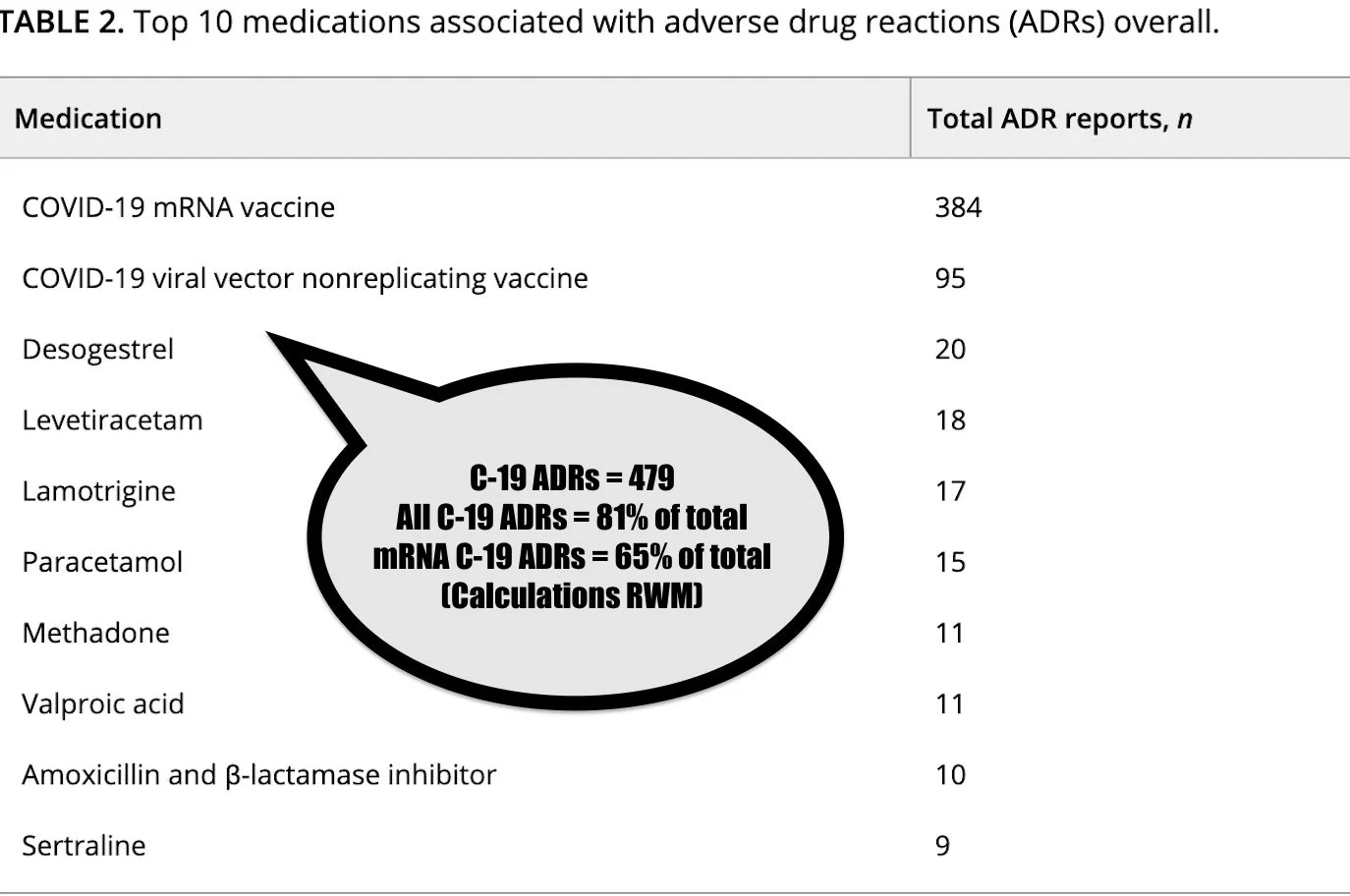86% of suspected EU adverse drug reactions in infants transmitted through breastfeeding are linked to C-19 vaccines.
The paper concludes by stating that COVID-19 vaccines provide "benefits" to infants...
A new paper came out on April 6, 2025 in the British Journal of Clinical Pharmacology titled “EudraVigilance insights: Suspected adverse drug reactions in infants through breastfeeding” with some startling new information regarding COVID-19 vaccination in infants.
To begin, the paper discusses the EudraVigilance system, which serves as the European Union's centralized system for managing and analyzing information on suspected adverse reactions to medicines. Operated by the European Medicines Agency (EMA), it plays a critical role in pharmacovigilance, ensuring the safety of medicines authorized or being studied in clinical trials within the European Economic Area (EEA).
EudraVigilance facilitates the electronic submission and exchange of Individual Case Safety Reports (ICSRs), documenting suspected adverse drug reactions (ADRs). The case reports are submitted by national regulatory authorities, marketing authorization holders, healthcare professionals, patients, and clinical trial sponsors. You can think of it as somewhat like the CDC VAERS system, and it has similar problems.
The paper’s abstract is as follows:
Aims: We aimed to describe suspected adverse drug reactions (ADRs) in infants resulting from medications transmitted through mothers' milk, as reported to the European ADR database, EudraVigilance. The research sought to understand the frequency, seriousness and nature of these ADRs to assess potential risks associated with maternal medication use during breastfeeding.
Methods: Data from EudraVigilance were analysed. The study included all reported ADRs suspected to be related to medications transmitted through mothers' milk from 1 January 2013 to 1 July 2023. The data were categorized by reporting time, infant age and sex, seriousness and type of ADR, and the medications involved.
Results: A total of 922 suspected ADRs were reported in breastfed infants. Serious ADRs accounted for 133 cases (14%), with 15 reported fatalities, primarily associated with methadone (n = 11) and diamorphine (n = 3). COVID-19 vaccines were linked to half of the suspected ADR reports (n = 479, 52%), while serious ADRs were mainly associated with nervous system drugs (n = 73, 43%), particularly anticonvulsants and opioids. Most cases (n = 511, 55%) occurred in infants aged between 1 month and 1 year.
Conclusions: The reporting of 922 ADRs in breastfed infants over a decade, compared to the estimated millions of infants exposed to medications via mothers' milk annually in Europe, suggests a very low reporting rate of suspected ADRs. This finding emphasizes the significant challenges in postmarketing surveillance and suggests that underreporting remains a critical concern in pharmacovigilance.
The results section discusses the COVID-19 vaccination drug adverse events, written as follows:
RESULTS
In total, 922 ADRs in breastfed infants were reported to EudraVigilance between 1 January 2013 and 1 July 2023. Among the ADR reports, 355 (39%) were reported in boys, 323 (35%) in girls and 244 (26%) did not have the sex specified. The number of ADR reports varied significantly over the years, with a notable surge in 2021 and 2022. This increase was primarily driven by reports related to COVID-19 vaccinations, which were introduced to the market in 2020 but accounted for 52% (479 out of 922) of the total reports over the 10-year period (Figure 1).
Of interest is that the researchers buried the data that in 2021 and 2022, about 86% of all drug-infant adverse drug reactions transmitted from breastfeeding were linked to C-19 vaccines. Which, of course, is the first two years that the vaccines were introduced into the market!
The data speaks for itself:
Figure 1 on the paper calculated the adverse event ratio for the first two years of the COVID-19 vaccine release. My calculations cover what the authors apparently didn’t do - or the editors took out- are shown in the speech bubbles found on the figures from the paper as well as in bulleted points afterwards.
Table 2 My calculations of the percent of adverse drug reactions overall for the top ten medications for the decade of surveillance:
My calculations of the percent of serious adverse drug reactions from C-19 vaccination of the top ten medications for the decade of surveillance.
The results not reported in the data section of the paper are as follows:
For the first two years of the C-19 vaccination release, ≈86% of all infant adverse drug reactions reported to have been transmitted through breast milk came from vaccination.
In the decade of surveillance, ≈81% of all infant adverse drug reactions reported for the top ten medicines, which were transmitted through breast milk came from patients that had recently accepted C-19 vaccination (despite only two years of data for C-19 vaccination).
In the decade of surveillance, 65% of all infant adverse drug reactions reported to have been transmitted through breast milk relative to the other top ten drugs came from mRNA C-19 vaccination (despite only two years of data for C-19 vaccination.
In the decade of surveillance, 29% of all SERIOUS infant adverse drug reactions reported to have been transmitted through breast milk came from mRNA C-19 vaccination relative to the other top ten drugs (despite only two years of data for C-19 vaccination.
What conclusions about C-19 vaccination were made by the authors?
This paper was released in April 2025. The researchers had the audacity to gaslight mothers and physicians who reported these injuries. Direct quotes from the paper include:
An example where media attention has probably led to numerous reports is the many reports concerning COVID-19 vaccination (Figure 1)
there is no evidence to suggest they survive passage through the infant's gastrointestinal tract or harm breastfeeding infants.23, 24
In contrast, breast milk from vaccinated individuals contains SARS-CoV-2-specific antibodies and T cells, which benefit the infant's developing immune system.25, 26
Overall, the evidence suggests that there is no risk to infants from breastfeeding by mothers who have received the COVID-19 vaccine and, indeed, there may be some potential benefits.23, 27”
It is astounding that 29% of all serious adverse drug reactions during the decade of surveillance transmitted through breast milk came from mRNA COVID-19 vaccination, despite having only two years of these products being on the market! Then, the authors dare to state that these serious adverse events were due to “media attention.”
Furthermore, there is evidence that the vaccine can find its way into breast milk (reference). Breast milk will often find its way into the nasopharynx while an infant is breastfeeding. This is especially common in newborns and preterm infants due to their immature swallowing coordination. In some cases, breast milk may even regurgitate into the nasal cavity, a phenomenon known as nasal reflux. So mucosal inoculation or drug adverse events from nano-lipid particles are entirely possible;
Furthermore, I question how any editor or reviewer could have allowed such statements regarding serious adverse drug events to slip by unnoticed.
In scientific studies, there are ethical guidelines on the treatment of women. Gaslighting disproportionately targets marginalized groups, including women, by exploiting societal stereotypes and power imbalances.
Traditionally, women have faced dismissal or pathologization within medical and social frameworks, resulting in misdiagnoses and insufficient care. In research environments, gaslighting may continue these detrimental effects by invalidating their experiences and upholding stereotypes of irrational behavior. It also harms women and children by leading to delayed diagnosis, which can worsen health outcomes.
So, why is ok for scientists (and editors) to gaslight women, their physicians, and regulators who report on the adverse drug reactions from the COVID-19 vaccine? I believe that the answer is obvious.
Please use the following web address to express your opinions about this paper to the British Pharmacological Society.





